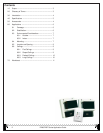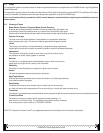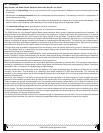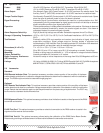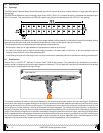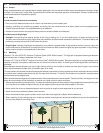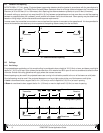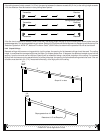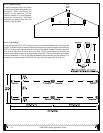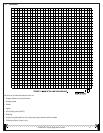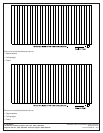
4 D296/D297 Series Application Guide
3.0 Introduction
Why should I use Beam Smoke Detectors and where should I use them?
• Where there are high ceilings such as in atriums and aircraft hangers. Because the detectors mount on the walls easier access
is achieved.
• Where there is a dusty environment such as in warehouses, factories and barns. The detectors have built-in compensation to
prevent alarms due to dust.
• Where there are expansive ceilings. One set of beam smoke detectors can replace up to 24 spot type smoke detectors. This
saves on service and installation costs especially is such areas as large offices or department stores.
• On ornamental ceilings where spot detectors would be a distraction.
• Where there is limited access to the ceiling such as in factories and warehouses.
The D296 Series are Long Range Projected Beam smoke detectors which consist of separate transmitters and receivers. The
projected beam smoke detectors consist of a transmitter that projects an infrared beam across the protected area to a receiver
containing a photosensitive cell, which monitors the signal strength of the light beam. The detector works on the principle of light
obscuration. The photosensitive element of the beam smoke detector sees light produced by the receiver in a normal condition. The
receiver is calibrated to a preset sensitivity level based on a percentage of total obscuration. This sensitivity level is determined by
the length of the beam (the distance between the transmitter and receiver) and the desired response time. Eight sensitivity settings
are available for selection by the installer based on the length of the beam used in a given application.
The transmitter may be powered independently from the receiver, which can greatly reduce wiring runs and, therefore, installation
cost. Since battery back up is required for fire alarm systems, battery back up would be required for the transmitter whether it is
powered from the panel or independently.
Unlike spot type photoelectronic smoke detectors, beam smoke detectors are generally less response sensitive to the color of
smoke. Therefore, a beam smoke detector may be well suited to applications unsuitable for spot-type photoelectronic detectors,
such as applications where the anticipated fire would produce black smoke. Beam smoke detectors do require visible smoke and
therefore may not be as sensitive as ion detectors in some applications.
Beam smoke detectors are sensitive to the cumulative obscuration presented by a smoke field. This cumulative obscuration is
created by a combination of smoke density and the linear distance of the smoke field across the projected light beam. Cumulative
obscuration, then, is a measure of the percentage of light blockage.
Since the sudden and total obscuration of the light beam is not a typical smoke signature, the detector will see this as a trouble
condition, not an alarm. This threshold is at a sensitivity level which exceeds 90 to 95% total obscuration. This minimizes the
possibility of an unwanted alarm due to the blockage of the beam by a solid object, such as a sign or ladder, being inadvertently
placed in the beam path.
Very small, slow changes in the quality of the light source also are not typical of a smoke signature. These changes may occur
because of environmental conditions such as dust and dirt accumulation on the transmitter and/or receiver’s optical assemblies.
These changes are typically compensated for by the automatic environmental compensation circuit. When the detector is first
turned on and put through its setup program, it assumes the light signal level at that time as a reference point for a normal condition.
As the quality of the light signal degrades over time, perhaps due to dust, the environmental compensation circuit will compensate
for this change. The rate of compensation is limited to insure that the detector will still be sensitive to slow or smoldering fires. When
the automatic environmental compensation circuit can no longer compensate for the loss of signal (as with an excessive accumulation
of dirt) the detector will signal a trouble condition.
The receiver indicates a trouble condition if the the beam strength is increased by more than 20%. This can be caused by incorrect
alignment of the transmitter and receiver or a partially blocked beam when the transmitter and receiver are installed.




